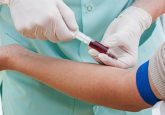Communicating the changes to cervical cancer screening in England: the choice to have an HPV test

Scientific understanding of the role of human papillomavirus (HPV) in cervical cancer increased dramatically through the 1990s. The last 7 years have seen the introduction of HPV vaccination for young women in many developed countries. In parallel, the potential for HPV testing to improve current cervical screening practices is being explored. Primary HPV testing in the cervical screening context involves testing the cervical sample for the presence of HPV DNA. Many studies have shown that compared with cytology, HPV testing has improved sensitivity for detecting high-grade disease [1]. HPV-based screening would therefore detect precancerous lesions that would have progressed sooner than cytology. In the US, combined HPV and cytology is recommended for women over the age of 30 who wish to lengthen the screening interval [2]. A UK-based randomized trial (ARTISTIC) found that primary HPV testing with cytology triage, was the superior option, benefiting from a high negative predictive value permitting longer intervals between screening invitations. The automated process of HPV DNA testing also offers high throughput [3]. Primary HPV testing is now being piloted in the UK [4]. Decisions about how best to use HPV testing for the prevention of cervical cancer are likely to vary by country, depending on the current provision for cervical screening [5]. But whatever way HPV testing is introduced, these changes will need to be effectively communicated to the women who are invited to participate.
Click here to view the full article.




